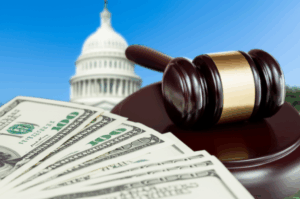Trump’s Tariff Playbook Under Fire—What Comes Next for Markets?
Donald Trump’s signature approach to international trade, heavily reliant on tariffs as a strategic tool, is once again a central topic of debate as the 2024 presidential election draws nearer. Critics argue that this “America First” protectionism, while appealing to some segments of the electorate, risks igniting trade wars, disrupting global supply chains, and ultimately burdening American consumers and businesses. For young adults navigating their financial futures and keenly observing economic shifts, understanding the potential ramifications of such a policy re-implementation is crucial. The question on many minds is not just about the rhetoric, but the tangible market impact should Trump’s tariff playbook dictate future economic policy.
The core of Trump’s trade philosophy revolves around using tariffs—taxes on imported goods—to compel other nations to negotiate more favorable trade terms, protect domestic industries from foreign competition, and reduce trade deficits. During his previous term, the imposition of tariffs on steel and aluminum imports, as well as a broad range of Chinese goods, became hallmarks of his administration. Proponents argued these measures revitalized domestic manufacturing, protected national security interests, and forced countries like China to address unfair trade practices. Indeed, some American industries saw temporary boosts in demand, and the trade deficit with China did narrow at times. However, this approach drew significant fire from economists and international trade organizations. They highlighted that the costs of tariffs are often absorbed by domestic importers and subsequently passed on to consumers through higher prices, acting as a de facto tax on American households. Moreover, retaliatory tariffs from trading partners like China and the European Union hurt American exporters, particularly in the agricultural sector, and complicated global supply chains already under strain. The resulting trade uncertainty often led to reduced business investment and a drag on overall economic growth.
Looking ahead, should Donald Trump secure the presidency, his administration has signaled an intention to expand the scope and scale of tariff application. One prominent proposal includes a universal 10% tariff on virtually all imported goods, alongside the potential for significantly higher tariffs, possibly exceeding 60%, on products from countries like China. This aggressive stance is designed to further incentivize domestic production and reduce reliance on foreign supply chains. For markets, the prospect of such broad-based tariffs introduces a complex web of potential outcomes. Equity markets would likely face increased volatility, as companies reliant on international trade or importing raw materials would see their input costs rise, potentially eroding profit margins. Retailers selling imported goods would be forced to either absorb these costs or pass them on to consumers, risking reduced sales volume or inflationary pressures. Conversely, a select few domestic industries that directly compete with imported goods might see an initial benefit from reduced foreign competition, though this effect could be offset by higher costs for their own imported inputs or retaliatory tariffs on their exports.
Beyond equities, the impact would ripple across other asset classes. Bond markets could see a flight to safety initially, with investors seeking the perceived security of U.S. Treasuries amidst global trade uncertainty. However, the inflationary impulse from tariffs—driving up prices for a wide range of goods—could push the Federal Reserve to maintain higher interest rates for longer, potentially impacting bond yields negatively in the medium term. The U.S. dollar’s trajectory would also be under scrutiny; while capital might initially flow into the U.S. seeking stability, persistent trade wars and a potentially slowing global economy could eventually weigh on its value. Commodity markets would experience mixed effects, with some raw material prices potentially declining due to reduced global demand, while others linked to disrupted supply chains could see spikes. Ultimately, the cumulative effect of widespread tariffs could be a significant contributor to inflation, complicating the Federal Reserve’s efforts to manage price stability, and potentially dampening overall economic growth as consumer spending power diminishes and business investment is curtailed by uncertainty. The broader economic landscape would shift towards a more nationalistic, less interconnected model, with significant implications for global trade flows and international cooperation.
In conclusion, the debate surrounding Donald Trump’s tariff playbook is far more than just political rhetoric; it’s a profound discussion about the future direction of the U.S. economy and its role in the global financial system. While the stated aim is to bolster domestic industries and create jobs, the economic consensus points to potential headwinds in the form of higher consumer prices, supply chain disruptions, and a significant risk of retaliatory measures from trading partners. For investors and market watchers, particularly young adults building their financial literacy, the key takeaway is the potential for substantial market volatility and a recalibration of investment strategies in an environment where trade policy becomes a primary driver of economic performance. Monitoring how these policy proposals evolve and the reactions they elicit from key global players will be paramount in anticipating what comes next for markets.





